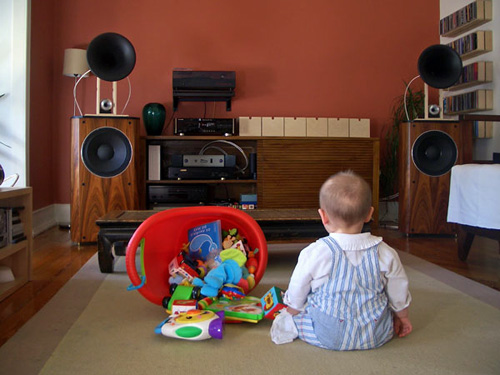tuga
Legal Alien
How do you know it's accurate if you don't know what you are comparing it to? Idiotic notion
The software does it for you. Pretty idiotic isn't it.
Did you miss the part where I said that "Listening to accuracy is more tricky but there are problems that one can identify through listening assessment"
so by that logic you could tell how 'accurate' a copy of the Mona Lisa is without reverting to the original?
Good question.
Subjective assessment of playback performance (through listening) is indeed much more difficult than evaluating the accurate reproduction of still or moving images.
My guess is that the visual references are far more common and more readily available for direct comparison, although for absolute accuracy one will have to resort to a display calibration system (and perhaps the visual cortex is more developed?).
Colour frequency accuracy is just easier to determine than sound frequency accuracy, and perhaps less influenced by taste.
I would say that sound resolution is perhaps more obvious but some types of distortion such as exaggerated high mids and treble can give the wrong impression of resolution (whilst spoiling the tonal balance which can be compared to colour balance in visual terms).
For sound you'll also need solid references of both live sound (what instruments and voices actually sound like in reality) as well as reproduced sound (one must educate oneself on what is possible to achieve in domestic reproduction).
The goal of a hi-fi system is to reproduce in the domestic environment the sound signals stored in a physical or dematerialised medium with the highest possible accuracy.

"Blow-Up" - Michelangelo Antonioni, 1966
Let's draw a parallel with photography.
Imagine you wish to reproduce Edward Hopper's painting "Nighthwaks" and distribute the resulting poster so that it can be displayed in a domestic environment.
First you must position the painting under adequate lighting (neutral in tone, even in distribution) and parallel to the camera's sensor.
(with sound you'd be adequately positioning the musicians or instruments and the pair of microphones in relation to each other and the room for the best balance)
Next you will choose a lens that produces the lowest distortion possible and a high resolution camera, place them on a tripod, use a grey card for white balance referencing, measure the light with a high performance light meter (and perhaps bracket), set the camera to RAW capture, the lowest ISO and use a self timer or remote to trigger the shutter.
(with sound this would be the microphones, mic pre-amps and A/D converter).
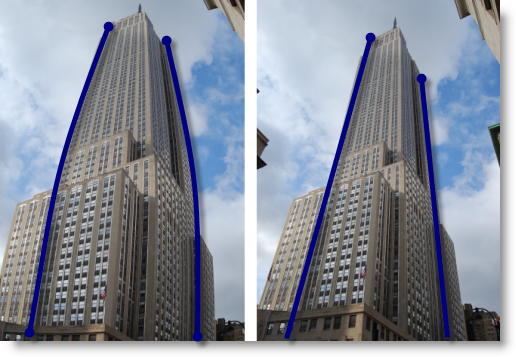
Geometric distortion
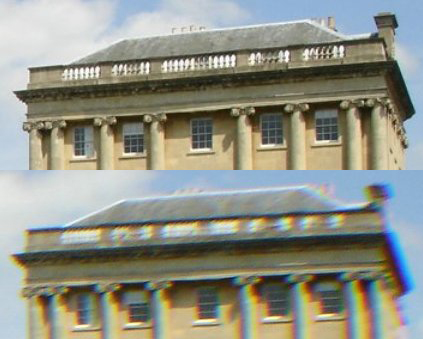
Chromatic aberration
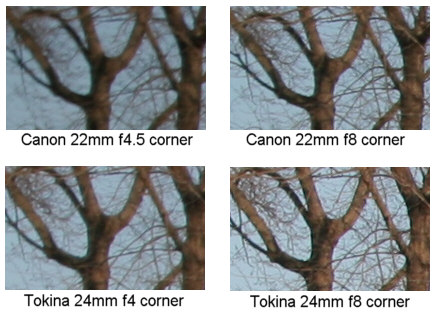
Corner sharpness comparison at different apertures
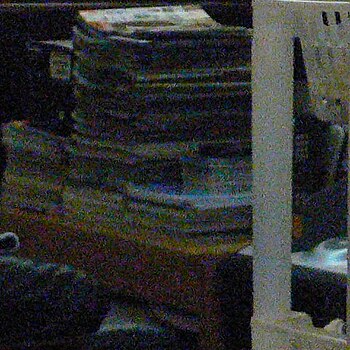
High ISO digital noise
After the image has been captured it will then be processed in a specialised software like Photoshop and subsequently sent to reproduction/printing.
(in audio this would be the mixing/editing and mastering phases).
But the final stage, printing, also requires fidelity or accuracy and the best results will be achieved with the used of a wide-gamut printer and colour profiles that will match the image you see on screen with the colour tables of the printer.
(this is the hi-fi system).

Display calibration system
The problem for us is that identifying sound accuracy through listening is much more difficult than using our vision for an image...

"Nighthawks" - Edward Hopper, 1942
Relying on measurements from Stereophile to judge wether a speaker is any good or not(as you have previously stated) is again just foolish, ie what range of measurement/parameters are audible, have a direct impact on listening impressions etc etc etc..?. again to make the point, two speakers can measure very similarly but sound completely different. Measurements will only take you so far, eg try swapping caps in a speaker crossover and witness the sometimes dramatic difference in perceived quality (with zero impact on measurements).
Which measurements are you talking about and what do you mean by "measure very similarly"?
There's a bucketful of measurements that you can perform to a speaker and I've never seen a pair that "measure very similarly" in all parameters.
Besides, there are aspects of the topology and construction that need to be taken into account; even looking at a speaker will provide important information.
Greg Timbers; "I am a firm believer that there is no magic in loudspeaker design, but I also strongly believe that we do not have all of the answers and that the ear is still the tool of choice. I can always hear differences that I can't measure but it doesn't make them any less important. It just means that we need to figure out how to measure what we hear. No speaker is even close to sounding "real" so personal opinion is always a major consideration.
I don't know who Timbers is but I agree that listening to speakers is mandatory before you make the final judgement; I use measurements for shortlisting (and I've gotten reasonably good at correlating the measurements with my listening impressions).



